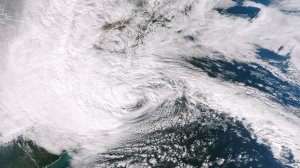 The first priority now, in the aftermath of Sandy, is to take care of the people who have lost their loved ones, homes and worldly goods. They need food and water and a jump-start. The complicated and interlaced systems that keep the East Coast hive functioning—all that needs to be drained, cleaned and in many instances reconstructed.
The first priority now, in the aftermath of Sandy, is to take care of the people who have lost their loved ones, homes and worldly goods. They need food and water and a jump-start. The complicated and interlaced systems that keep the East Coast hive functioning—all that needs to be drained, cleaned and in many instances reconstructed.
At some point, when those projects are well underway, attention will turn to the nation’s recreational resources, which were also hammered. National parks from Florida to New York and as far west as Indiana were damaged. Sixty-nine are fully or partially closed. (Update here.) Sections of the Appalachian Trail are closed; at least one hiker was stranded in the Great Smoky Mountains National Park, where a rescue team was battling five-foot snow drifts. We haven’t seen a summary of state park closures but one can imagine.
The parks and trails won’t stay shuttered for long. Maintenance crews will bring the power back up. They and the rangers and volunteers will start clearing the trails and cleaning the buildings. This is a competent bunch, and they have done this before. (Although rarely on this scale.)
We’re looking past the initial patches that will get the parks and trails back in operation. Before Sandy, the National Parks Service was already suffering from chronic underfunding, with an annual operations shortfall (estimated to be in the hundreds of millions) and a multi-billion-dollar maintenance backlog. State parks are also woefully underfunded. And other agencies have been limping along: while we were scanning some of the closure reports, we found that parts of New Hampshire’s USDA-managed White Mountain National Forest are closed as a result of storm damage suffered in 2011.
Will it be easy to put money into the parks while we’re also rebuilding subways and bridges and homes? No. But it is an investment. Parks spur economic activity. They create jobs. They are not a luxury. They are part of the vital infrastructure.
Image: GOES East image of Hurricane Sandy approaching New York and New Jersey, Oct. 29, 2012, via NOAA.









